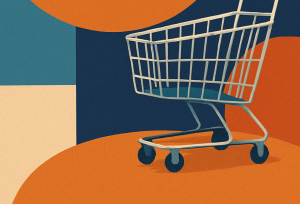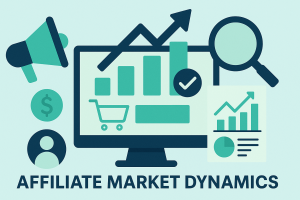
Share
Sure, it’s difficult to imagine a world where things have gone 100% “back to normal” after the past few weeks (has it been years?) of staying home.
But what we can do is try to plan around the day – or what will probably end up being an extended period of days – when we begin to gradually regain the luxury of once again taking for granted basic pastimes and freedoms we so desperately crave at the current moment.
And sure, things will take time, but as certain sections of the country and world begin testing out the feasibility of reopening their economies, it’s become increasingly clear that we are in fact eventually going to get there – all of us – one day at a time.
And I admit part of me cringes when I say that.
We’ve all heard “we’ll get through this” cliches broadcast widely in the media, advertisements, and on the news, but the fact is, it’s true. This will not last forever. And, not to be dramatic, but it will be a defining moment in the history of the human race to see how we respond.
Of course, it goes without saying, it’s necessary to be careful in this rollout process. I believe there’s a low probability that it will happen overnight, or that we’ll get things back up and running exactly how they were operating before. And maybe that could be a good thing?
To recap, we’ve spent quarantine relying on digital and virtual alternatives, understanding more clearly the shortcomings of our economic systems, reflecting on policies and status quo, and prioritizing certain necessities over luxuries. We could come out stronger than before and might not ever go back to exactly where we were in, say, January.
Not to go off on a tangent, but oh, to be back in January! Off the heels of the biggest Q4 in history for e-commerce and an economy that was riding high. Maybe fresh off a vacation or planning ahead for one. Not yet understanding the gravity of the Coronavirus.
Who would have thought, fast forward a few months, we’d be… well, here.
At Advertise Purple, we’re in the trenches with you, happy to be helping clients (new and old) weather this storm and, overall, see positive growth with MoM revenue for all clients up about 68%.
We’ve made things easier on our clients, specifically through strategies such as a CPA (Cost-per-action) system of payment.
Also, we operate in the digital realm, which makes the work-from-home transition smoother than if we were more heavily reliant on human-to-human contact like so many businesses that were not so fortunate throughout this process.
But trust us, we too are ready and hopeful to see e-commerce trends less centered around a contagious virus and more around a normal and healthy economy. We’d prefer a world where consumers made decisions like the ones they used to make before any of us knew what a N95 mask was.
So, let me attempt to shed some light on what people smarter than me predict will happen in the first few days, weeks, months, and eventually years after the world reopens, with an emphasis on the area of e-commerce. Ready? Let’s go.
The growth we saw in the e-commerce space during this time is not only substantial from a sheer numerical standpoint, but it’s made us realize a lot of things about digital systems and technologies we have in place, as they relate to selling and buying products online.
It’s almost as if e-commerce was put to the test. And all things considered, it passed with flying colors.
Think about it. With an immediate and unbelievable shift in demand bringing new and increasing returning consumers into the online shopping world, our infrastructure for the most part, has handled perceived issues like fulfillment and supply chain concerns remarkably well.
Online sales are up nearly 40% since late February, according to Signifyd’s E-commerce Pulse data. The more interesting story is not just a readout of what the numbers tell us about the last few weeks, but what they tell us about the next few years.
The movement of consumers to e-commerce channels has propelled the shift from physical retail as much as two years into the future for existing models. Pre-virus projections had 2020 e-commerce sales growing about 15% in North America and 16.1% worldwide.
Comparing sales from the same storefronts in their network, Signifyd saw more than double that year-over-year growth, 34.4%, in the first month the World Health Organization labeled COVID-19 a pandemic.
In recent weeks, Signifyd has seen sales to first-time online shoppers reach levels comparable to what you’d see on Black Friday and Cyber Monday – except now it’s been sustained for more than 10 days.
Does that mean 2020’s e-commerce growth will be over 30% for the full year? Probably not, though it’s not out of the question. That amount of growth over a year seems ambitious given the lack of overall consumer and market confidence.
However, even at this relatively early stage in the pandemic, experts are still confident that 20% is achievable as new buyers who would have never shopped online, but for COVID-19, are now doing so.
An analyst at eMarketer had the following to say about a specific vertical – consumer packaged goods (CPG) – that might see a huge shift towards more online shoppers, with similar arguments that could be applied to other recurring errand-type shopping experiences:
“I do think that [consumer packaged goods] ordering, both for click-and-collect and for delivery, is a permanent change that will come out of this. Once they have learned how to do it, habituated to the behavior, that will form a habit going forward that will ultimately represent a profound shift in a massive consumer category.”
That’s a big aspect here. Coronavirus has forced our hand and we’ve been asked to adjust shopping patterns. And after doing so, it’s only natural that a lot of us, after seeing how seamless the process is, will continue to use digital alternatives to complete tasks we previously may have in other ways.
So, what does all this mean for merchants going forward? As difficult as it might be, with all the challenges brought on by COVID-19, this is your time to shine. You need to act like it’s Q4 and operate as if it’s the holiday season all over again.
Make the most of the fact that shoppers are going to be exploring you as an option. Not all of them will be the savviest and they’ll need guidance. However, that slight lack of understanding of the e-commerce realm should be thought of as an opportunity.
Take this opportunity to serve customers in need and win them over for the long term.
In the midst of a crisis, consumers are likely to be forgiving, but you still want to provide as seamless an experience as possible. Look for points along your order management and fulfillment systems that you can automate to better respond to unusual order spikes and unusual order volumes for specific products.
Obsess over clearly communicating with customers about things such as out-of-stock items, delivery delays, and order cancellations. And amid the bad news, focus on positives: You have products to sell and there are people who want to buy them – in fact, more people every day.
So, how will e-commerce – and more importantly, your business – change after this period? Hopefully, it’ll be pretty similar. Just with more people relying upon it as an option. And how you tinker and tweak your strategies now will win you customers when this “is all over”.
So, in summary, no, brick and mortar establishments aren’t going to die. But you’ll be seeing more folks understanding and benefiting from online shopping. And depending on how you feel about the sanctity of the in-person shopping experience, that could be a good thing.
Less traffic, pollution, wasted resources, and an overall more efficient society are all distinct possibilities in our future. I for one, can’t wait. Also, let’s just all be better to each other when this is over. Hug your loved ones and support your friends. We’re all going to be okay.



